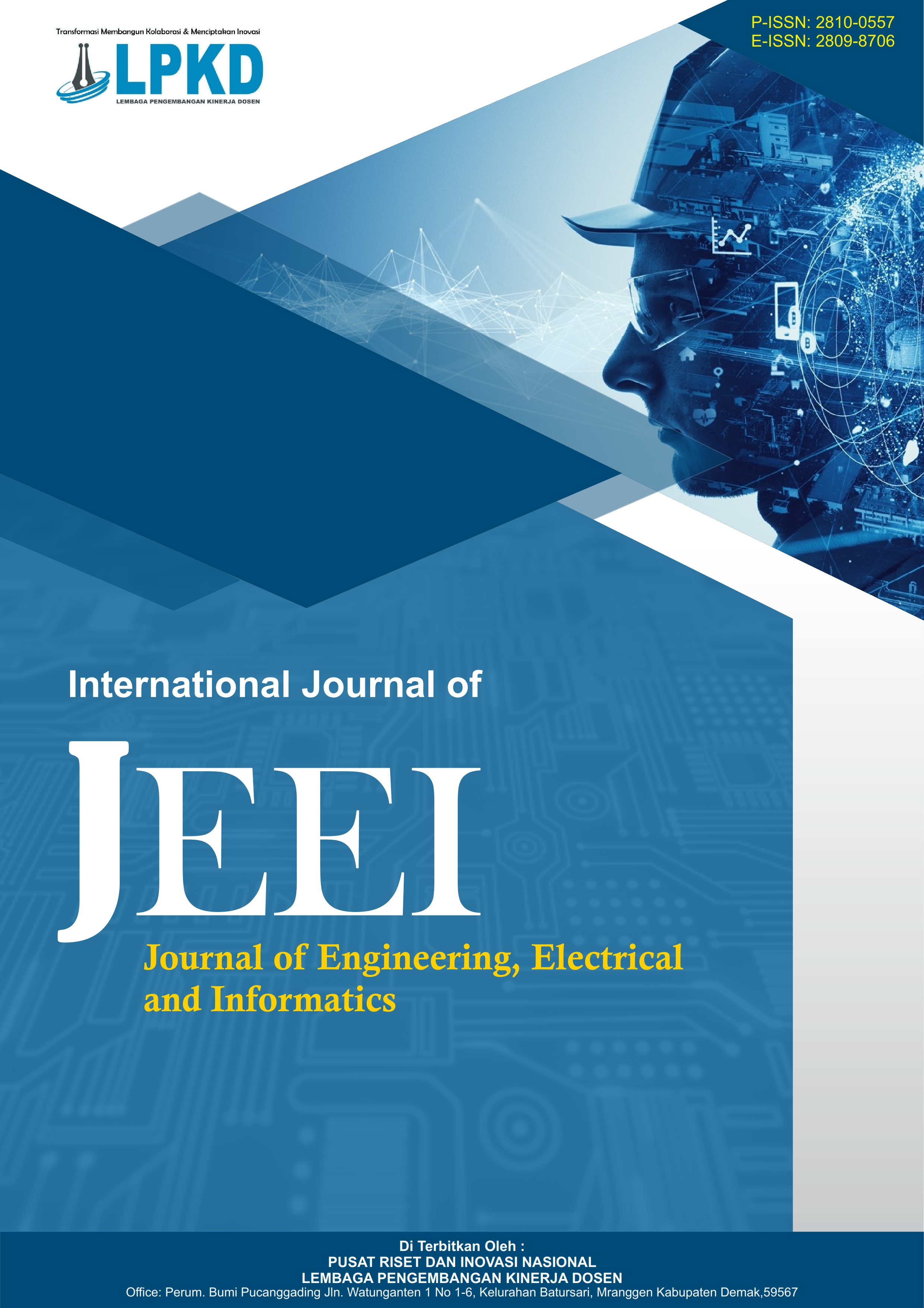Simple Medical Waste Incinerator Design and Construction
DOI:
https://doi.org/10.55606/jeei.v5i2.4359Keywords:
incinerator, medical waste, microcontroller, simple device, waste treatmentAbstract
Medical waste management is a major concern in protecting public health and the environment. This study aims to design and test a simple medical waste incinerator controlled by a microcontroller, intended for use in small-scale healthcare facilities. The method used was research and development (R&D), involving need analysis, system design, hardware assembly, and performance testing of the components and waste combustion effectiveness. The results indicate that the system operates stably with voltage error rates below 1% and high temperature sensor accuracy. The incinerator achieved an average combustion effectiveness of 95% across four types of disposable medical waste. The tool can operate automatically based on temperature and time settings, utilizing readily available and energy-efficient electronic components. These findings suggest that the developed incinerator is suitable as an alternative solution for medical waste treatment in clinics or health centers and has potential for further development into an environmentally friendly and sustainable incineration system.
References
E. S. Green, Medical Waste Incineration and Pollution Prevention. Springer, 1992.
Lasmana, Junaidi, and E. Kurniawan, “Rancang bangun alat pembakar sampah (incinerator) dengan burner oli bekas,” J. Teknol. Rekayasa Tek. Mesin, vol. 2, no. 1, pp. 35–40, 2021.
Winarno, A. D. Khalishya, D. N. Prasetyo, and H. N. K. Ningrum, “Perencanaan instalasi listrik gedung IGD Rumah Sakit Bhayangkara Banjarmasin,” FORTECH, vol. 5, no. 2, pp. 104–110, 2024.
Artanto, Dasar Mikrokontroler dan Arduino. Pasuruan: Pustaka Ilmu, 2012.
Zhang et al., “Potential spreading risks and disinfection challenges of medical wastewater by the presence of Severe Acute Respiratory Syndrome Coronavirus 2 (SARS-CoV-2) viral RNA in septic tanks of Fangcang Hospital,” Sci. Total Environ., vol. 741, p. 140445, 2020. doi: 10.1016/j.scitotenv.2020.140445.
Digikey, “MP1584 datasheet,” 2022.
Graphicontrol, Thermocouple Type-K Sensor Manual, 2020.
H. E. Ibrahim, K. Eamzy, and T. Ismail, “Environmental impact of medical waste incineration – literature review,” Int. J. Sci. Res. Sci. Eng. Technol., pp. 103–125, 2023.
H. Shadfar, M. G. Pashakolaei, and A. A. Foroud, “Solid-state transformers: An overview of the concept, topology, and its applications in the smart grid,” Int. Trans. Electr. Energy Syst., 2021. doi: 10.1002/2050-7038.12996.
J. W. Creswell and J. D. Creswell, Research Design: Qualitative, Quantitative, and Mixed Methods Approaches, 5th ed. SAGE Publications, 2018.
K. I. Darmawan, “Pengolahan limbah medis padat rumah sakit menggunakan insinerator,” Dinas Lingkungan Hidup Buleleng, 2024. [Online]. Available: https://dlh.bulelengkab.go.id
M. E. Putra and A. Pratama, “Perancangan sistem kontrol tungku heat treatment elektrik berbasis mikrokontroler,” J. Hasil Penel. Pengkaj. Ilm. Eksakta, vol. 2, no. 2, pp. 168–176, 2023.
M. H. Fuadi, A. W. Purwandi, and R. Hendra Y. P., “Rancang bangun kontrol dan monitoring pada mesin diesel menggunakan web mobile,” Jartel, vol. 20, no. 2, pp. 31–37, 2020.
M. Oroei, M. Momeni, C. J. Palenik, M. Danaei, and M. Askarian, “A qualitative study of the causes of improper segregation of infectious waste at Nemazee Hospital, Shiraz, Iran,” J. Infect. Public Health, vol. 7, no. 3, pp. 192–198, 2014. doi: 10.1016/j.jiph.2014.01.005.
M. R. Maulana, B. Suprianto, L. Anifah, P. Puspitaningayu, and J. Teknik Elektro, “Rancang bangun sistem mon-itoring dan kontrol air conditioner berbasis web,” INAJET, vol. 5, no. 2, 2023. [Online]. Available: https://journal.unesa.ac.id/index.php/inajet
O. O. Olanrewaju and R. J. Fasinmirin, “Design of medical wastes incinerator for health care facilities in Akure,” J. Eng. Res. Reports, vol. 5, no. 2, pp. 1–13, 2019. doi: 10.9734/jerr/2019/v5i216919.
Sugiyono, Metode Penelitian Kuantitatif, Kualitatif, dan R&D, 26th ed. Bandung: Alfabeta, 2020.
Wikipedia, “Heating element,” 2024. [Online]. Available: https://en.wikipedia.org/wiki/Heating_element
Z. Rizki, “Perancangan sistem pembakaran/incinerator untuk sampah organik menggunakan bahan bakar oli bekas,” Skripsi, Universitas Islam Riau, 2021.



.png)
.png)


